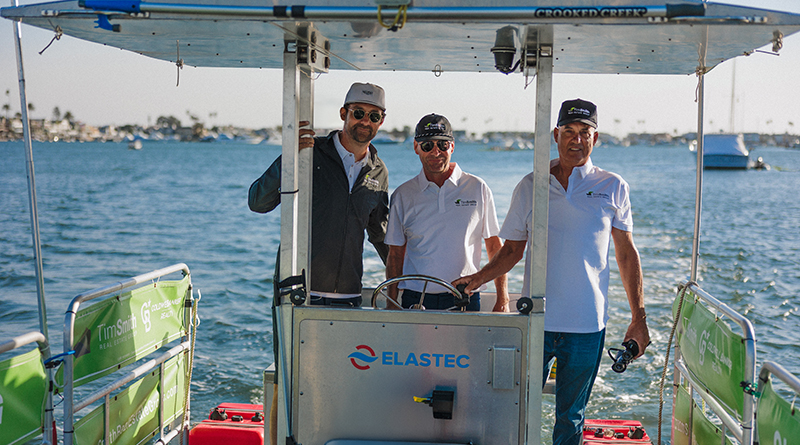LOS ANGELES— The Ports of Los Angeles, Long Beach and Shanghai announced on Sept. 22 that they would work together to create the first-ever Trans-Pacific green shipping corridor, a shipping route supporting zero-carbon emissions vessels and other emissions-reducing programs. It would be the first-ever green shipping corridor across the Pacific.
“This initiative will drive emissions reductions across the world’s largest ocean and lead to greener practices from supply chain participants along these vital trade routes,” said Mario Cordero, chief executive officer of the Port of Long Beach. “The new and innovative vessel technologies, increased availability of sustainable fuels and better practices created through this green corridor will also impact society’s transition to a cleaner future far beyond the areas served by our ports.”
The Ports of Los Angeles, Long Beach, and Shanghai, among the largest in the world, unveiled the Green Shipping Corridor Implementation Plan Outline to accelerate emissions reductions on one of the world’s busiest container shipping routes across the Pacific Ocean. The plan was developed with support from C40 Cities as part of its effort to reduce carbon emissions from the largest cities in the world.
“C40 is proud to support this first-of-its-kind green shipping corridor aimed at demonstrating that zero-carbon shipping at scale is feasible by 2030 and that less polluting ships and ports will also mean cleaner air, less noise and more jobs for local communities,” said Mark Watts, executive director of C40.
The plan is crucial to decarbonizing the global supply chains that power our economies and transitioning toward zero lifecycle carbon emission ships. It will showcase cutting-edge goods movement technologies, decarbonization applications and best management practices to progressively enhance efficiency and catalyze technological, economic and policy efforts to progressively decarbonize shipping and port-related activities.
In conjunction with the historical plan, the carrier partners will begin deploying reduced or zero-lifecycle carbon-capable ships on the corridor by 2025. They will work together to demonstrate the feasibility of deploying the world’s first zero-lifecycle carbon emission container ships by 2030. Carrier partners include CMA CGM, COSCO Shipping Lines Co., Ltd., Maersk and ONE. Core partners include the Shanghai International Port (Group) Co., Ltd., the China Classification Society and the Maritime Technology Cooperation Centre of Asia.
Partners will take steps to reduce carbon emissions and harmful pollutant emissions impacting air quality by expanding the use of shore power and supporting the development of clean marine fueling infrastructure. Cargo owner partners have set goals to contract with carriers to use zero lifecycle carbon emission shipping services and measure decarbonization progress. All partners will develop metrics to track decarbonization progress.
“This trans-Pacific green corridor will be a model for the global cooperation needed to accelerate change throughout the maritime industry,” said Gene Seroka, executive director of the Port of Los Angeles, in a press release. “Reducing emissions in this corridor will yield substantial reductions. For perspective, most of the emissions associated with moving cargo by ship occur in the mid-ocean part of the journey between ports. This corridor will help reduce mid-ocean emissions while continuing the work we have done to cut emissions within our ports.”







